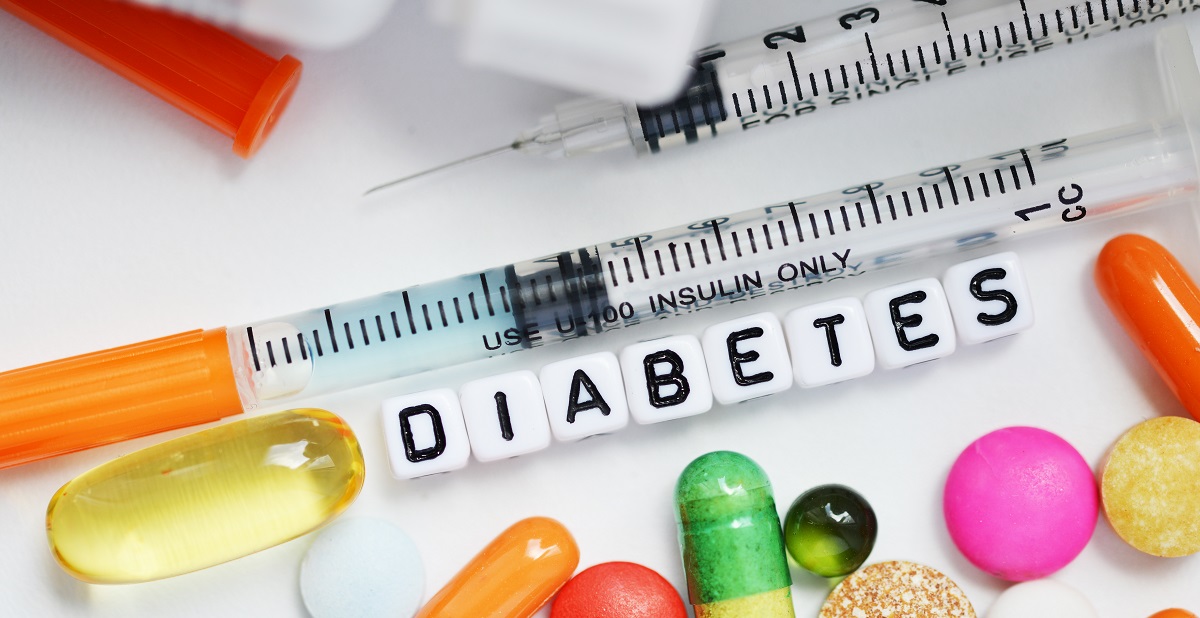
Our Editors independently research, test, and rate what we feel are the best products. We use affiliate links and may receive a small commission on purchases.
We hear a lot about diabetes – whether it be on a commercial or from someone we know who has it. Actually, almost 10 percent of the US population has some form of diabetes in 2015, also being the 7th leading cause of death that year.
If we’re talking globally, that number rises to over 422 million people. As you can see, diabetes isn’t anything to mess with. It can cause an array of problems that affect your quality of life, and can even be deadly if not cared for. The good news is that there are ways to prevent and treat it.
Prediabetes
Prediabetes is a condition that can form into type 2 diabetes. The cause is essentially down to how the body processes sugar. Glucose (a.k.a. sugar) enters your body through whatever you eat or drink.
To help transport the glucose to be used as energy, the pancreas produces insulin. However, if the insulin isn’t used properly, the pancreas will overproduce it in order to make it work properly.
When your pancreas can no longer keep up with the amount of insulin it must produce, you end up with hyperglycemia. Hyperglycemia is essentially high blood sugar.
Insulin resistance is the main cause of prediabetes, however, the reasons behind insulin resistance aren’t completely figured out yet. Some risk factors include: family history, being overweight, and a sedentary lifestyle. If you do have prediabetes, you have up to a 50% chance of it turning into diabetes within 5 – 10 years if you do not treat it properly.
Causes of Diabetes
As we just mentioned, diabetes is essentially caused through insulin resistance. However, it can also be caused if the pancreas doesn’t produce any insulin, or if it produces very little.
Diabetes is also believed to have a strong genetic link, meaning that it often runs in families. If you have any of those risk factors, it’s highly recommended you go get tested.
There are various tests to determine if you have it, and the most common way is to measure how much glucose is in the blood.
Treatment
If improperly managed, diabetes can lead to an array of health problems. Some of them include: hypoglycemia, diabetic neuropathy which can seriously damage your nerves, foot/limb damage, diabetic ulcers, kidney issues, heart disease, blindness, sexual dysfunction, oral issues, skin problems, and much more.
If you find you do have high blood sugar, it is possible to get it back within a healthy range. To do this, however, you are going to have to take action – both literally and figuratively.
This will involve eating a healthy diet, with smaller portions, but more frequent meals. Ideally, you’ll want to try and eat three meals a day, with a snack in-between so you’re eating every 3 hours. This will make your insulin production more stable, as well as your blood sugar.
Exercising at least 5 days a week will also help you out quite a bit. You don’t have to go all out, but even just taking a brisk walk for half an hour will help you greatly. Exercise makes your body use insulin more efficiently, and also works to lower blood sugar.
To ensure your blood sugar doesn’t fall to low, it’s important to check your blood sugar (we’ll get to that later) and eat a carbohydrate-filled snack around 30 minutes before working out.
You must not just self-treat, though. Diabetes isn’t a condition that you can treat without a doctor. Your physician will aid you in creating a treatment plan that’s right for you and your lifestyle. However, you may need the help of other health care professionals, such as a foot doctor, endocrinologist, and more.
Your doctor will provide you with the blood sugar levels that you should be at, and you must make sure you reach that goal daily. In addition, they’ll recommend to you the proper diet you should be consuming, exercise routines, and medications.
The good news is, that for many, proper diet and exercise is sufficient in keeping diabetes under control. However, there are many medications that also help bring blood sugar down to acceptable levels.
Increase Insulin Production: Chlorpropamide, Glimepiride, Glipizide, Glyburide, Nateglinide, and Repaglinide
Decrease Sugar Absorption in Intestines: Acarbose and Miglitol
Improve Insulin Use in Body: Pioglitazone and Rosiglitazone
Decrease Sugar Production by Liver: Metformin
Increase Production by Pancreas: Alogliptin, Dulaglutide, Linagliptin, Exenatide, Liraglutide, Lixisenatide, Saxagliptin, Sitagliptin, and Semaglutide
Block the Reabsorption of Glucose: Canagliflozin, Dapagliflozin, and Empagliflozin
Injectable: Pramlinitide
Vitamins and Minerals
In addition to taking medication, you can also use vitamins and minerals to help control diabetes.
Vitamins B6 and B12: These have been shown to help with diabetic neuropathy if you have low levels of these particular vitamins in your body.
Vitamin C: Can help with low levels of insulin in the blood, which can aid cells in absorbing the vitamin. It can also help you keep proper cholesterol and blood sugar levels.
Vitamin E: Can help prevent damage to blood vessels and protect against kidney and eye disease. However, make sure you’re not consuming too much, as it can lead to a higher risk of stroke.
Magnesium: Can control blood sugar levels and improve how insulin is used in the body.
Monitoring
Obviously, if you’re serious about controlling your diabetes you’re not going to go into it blindly. Monitoring is extremely important here, and you’re going to want to use a blood glucose meter or a continuous glucose sensor to do it.
To find out how your blood sugar is reacting to your treatment plan, you’ll need to test yourself throughout the day. Ideally, you’ll want to check before and after meals, and whenever you may be feeling like your blood sugar is off. It’s also a good idea to check if you’re sick or altering from your normal activity. The number of times you do your checks will depend on your individual treatment plan.
Glucose Meters
Meters measure your blood sugar levels with a single drop of blood you’ll get from your fingertip. There are various brands and models out there, and each will vary in price and the features they come with.
You should first check with your insurance company to see if they cover these, or which models and the number of test strips they’ll cover. The blood drop will be placed on a test strip which is then placed into the meter and analyzed.
There are a few glucose meters which can be used on alternative sites other than the fingertips. Keep in mind that alternative site testing may be delayed behind the fingerstick testing by an entire 20 minutes or even longer.
Alternative site testing may also give less accurate blood sugar results, which can end up with you making the wrong decision based on these inaccurate levels.
Continuous Glucose Monitors
Continuous Glucose Monitors (CGM) are units which measure the sugar in the interstitial fluid of the body. They are applied by you, and changed anywhere from every few days, to weekly (or longer).
The majority of sensors are taped against the skin, where a probe goes through the skin into fatty tissue. It’s there, where it tests sugar levels in the fluid. The sensors continuously collect samples, then giving the info to a receiver.
Every few minutes, the receiver shows a reading which is the average of these samples. It can also show you glucose trends and can even have an alarm go off if levels get too high or low.
While they’re convenient in many ways, they do have their downsides. One, is that the levels may be slower than a blood glucose level by up to 25 minutes. They must also be calibrated with blood glucose readings from a blood glucose meter, so you still have to prick your finger.
Summary
Diabetes is a serious matter, and you should take it as such. However, there are various ways that you can manage the condition and still lead a normal life. Exercise and proper diet are essential for everyone on the planet to live a healthy lifestyle.
While monitoring takes some getting used to, pretty soon it will just be another step in your daily routine. We hope our guide has helped you out, and will be seeing you again shortly!
Notice:
HealthWellness365 is a participant in the Amazon Services LLC Associates Program, an affiliate advertising program. HealthWellness365 earns fees from products sold through qualifying purchases by linking to Amazon.com. Amazon offers a commission on products sold through their affiliate links.In March 2019 Amazon announced that Health Savings Accounts and Flexible Spending Accounts (HSA/FSA) would be accepted as new forms of payment for eligible product purchases. Using HSA/FSA funds to purchase on Amazon can be a great way to reduce taxes and reduce overall healthcare costs for items not covered under medical insurance. Users of such medical savings plans are issued a debit card by their provider, which can be added to their payment methods in their Amazon account.
Whether items sold on Amazon are deemed as eligible for HSA/FSA plans remains the responsibility of the buyer and their particular health plan provider. It’s ultimately up to the IRS and participating health plan providers to deem which medical and health products are considered eligible for the payment plans.
But the eligibility is quite broad and inclusive of thousands of products that are sold on Amazon and considered Health Savings and Flexible Spending Accounts plan-eligible. See this IRS document for more information about Health Savings and Flexible Spending Accounts: https://www.irs.gov/pub/irs-pdf/p969.pdf
